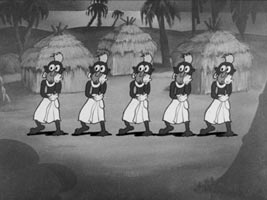Full-fledged cinema
 In North America, new voices are emerging in First Nations cinema, through the work of First Peoples filmmakers who nowadays no longer hesitate to take on feature-length films.
In North America, new voices are emerging in First Nations cinema, through the work of First Peoples filmmakers who nowadays no longer hesitate to take on feature-length films.
For two feature films from the USA, the city has become the décor, the habitat and backdrop. There are clear cinematographic references: Herzog in the case of Harjo’s film Mekko, in which he chose Aboriginal homeless people in Tulsa as actors. And multiple references from Antonioni to Jarmusch, for Blackhorse Lowe in Albuquerque, a meeting point for Southwestern US First Nations and artistic centre, the setting for the action in Chasing the Light. From Canada, too quickly passing on our screens (but here is the opportunity to make up for lost time), the feature films Le Dep (by Sonia Bonspille-Boileau) and Firesong (by Adam Garnett-Jones), up for the APTN award, set their characters’ lives in their home communities.
The development of an independent professional cinema, advancing confidently in its new dawn, is groundbreaking. This development comes alongside the flowering of artisanal, community-based cinema, for example Wapikoni Mobile and its fascinating short-subject productions.
Modernity is a constant undercurrent. The stereotyped images of yesteryear portraying Native peoples —at their expense, we might say— are revisited, chopped up, and cheerfully reassembled. The outcome of this creative process provides us films that are at once brilliant exercises in style and denunciations of colonialism. This is particularly the case in 100 Tikis (by Dan Taulapapa McMullin), but also in short films based on NFB archives by artists as accomplished as Jeff Barnaby and Kent Monkman.
Makivik Corporation entrusted a veteran documentarian with gathering the memories of Inuit leaders who faced off against Robert Bourassa’s hydroelectric projects. They succeeded in undermining the Quebec government, while it thought it could be lord and master over their lands. Far from the made-to-order product one may have feared under the circumstances, on the contrary Napagunnaqullusi – Se tenir debout has proven to be a great historical film recounting a major chapter in contemporary Quebec history with a remarkable perspective and pinpointing the decisive role the Inuit nation played in this process.
These cinematographic accomplishments are proof of the assurance now found among the movement for Indigenous peoples’ affirmation. They will no longer remain outsiders and are telling their own tales, in tune with the times. Academics are observing, studying and analysing these new productions. This year, a retrospective screening of films from New Zealand and other Polynesian countries, presented by our Maori guests, will tie in to our annual conference, making First Peoples Festival not only a forum for the fleeting presence of remarkable creations but also an arena where new knowledge can emerge about ongoing changes in Aboriginal cultures.
In Latin America, the patient strength of deeply-rooted cultures is shaking the political landscape and leaving its mark in the field of cinema. Some striking examples on our 2016 roster are the dramatic strength of Lo que lleva el rio, a Venezuelan feature film in the Warao language, set in the Upper Orinoco region; the rage to create among young actors in Movimientos espectulares, espousing Bolivia’s revolutionary fervour in a moment of deep change, and the earthshaking response the voice of Nelida, Hija de la laguna provoked in Peru as she called upon the elemental spirits to thwart an ecocidal gold mining project. As does the presence of many delegates from the Southern hemisphere travelling here for the INAAC conference, taking place during First Peoples Festival 2016.
No, these are no longer a few isolated works of art patiently gleaned from the four corners of the Earth. It is a groundswell, carrying all the creative powers of peoples reinventing themselves in a sovereign inspiration coming from time immemorial.
For a week, Montreal finds itself at the epicentre of this global movement. More than ever, it is a chance to catch up on it…
